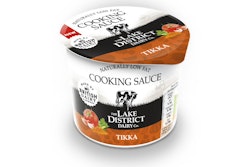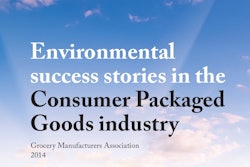
The conversion of corn into PLA (polylactic acid) polymer had languished as a quaint technology until given impetus by the sustainability era. Since then, and as annually as the fall harvest, the more enthusiastic predictions about growth in PLA have fallen short; nonetheless, corn remains the most utilized feedstock for bioplastics plastics.
Children of the corn
Versatile as to the geographical and climate conditions under which it can grow, corn is the most cultivated crop worldwide, with the United States producing about a third of the tonnage. That's a plus, given that a feedstock that's bountiful offers more prospects for large- scale conversion and the economies-of-scale that come with it.
Corn's bountifulness, say some critics, should be utilized to help relieve the hunger that prevails in many parts of the world, rather than to make packaging. That's an ethical argument, the counterargument being that ethics are relative. But wait. Isn't the advocacy for sustainability an ethical argument: our being stewards of the planet, tasked with conserving it, not only for ourselves but also for posterity?
Corn grown for industrial consumption likely will be the GMO (genetically-modified organism) variety, which is more blight-resistant than its conventional counterpart. That fact gets some critics corn-popping hot, opposed as they are to GMOs on principle and unconvinced that corn meant for industrial consumption won't get mixed into the food supply for humans (or for domesticated animals).
Dead in the water
A dead zone is an area of water devoid of certain marine life, principally species that dwell and feed at floor depths. Corn production has been identified as a major cause of dead zones. The connection goes: nitrogen-rich fertilizer is used for corn production; rain and runoffs wash the residual fertilizer into bodies of water; algae feast on the nitrogen and multiply; the algae die and sink to the bottom; the process of decay consumes oxygen; and, marine life can't live in the oxygen-starved waters.
A frequently cited dead zone is the one in the Gulf of Mexico. Years after its discovery, the area continues to spread, leisurely but insistently, like a lazy oil slick, and some marine biologists and their ilk already have declared it a crisis. A separate but related issue is the effects on livelihoods, as commercial fishing has had to venture increasingly out-to-sea for worthwhile hauls.
The sequence that results in a dead zone need not play out to its conclusion in order to generate problems. Algae, while alive and blooming, can release substances that can hinder a water-treatment facility's ability to turn the water potable. Such was the case several weeks before the writing of this article, when Toledo and other parts of Ohio endured a drinking-water crisis linked to algae in Lake Erie. Dead zones create battle zones, not only pitting the interests of the farmer against those of the fisherman, but also pitting rural interests against urban.
A kernel of truth
Kudos to whoever coined the name, bioplastics; for, that person demonstrated keen awareness that words carry connotative meanings. No doubt the intent was to leverage the implied association with sustainability. With corn, one has a feedstock that's renewable, from the good Earth, and familiar to all; but, it doesn't automatically follow that the environmental footprint of PLA packaging is smaller than the footprint of-let's say-PET packaging. The latter is the product of a supply chain that's been honed for efficiencies over generations; in contrast, some critics argue that the total amount of resources consumed by the former makes for a poor return-on-investment.
Many factors figure into an objective comparison along sustainability lines, but a factor inevitably cited is that of end-of-life, with PLA and its brethren bioplastics touting their biodegradability, a term that can invite inaccurate associations. Biodegradability raises a host of questions regarding the required conditions and time, as well as the by-products. PLA, in specific, is promoted as being compostable; however, that's only true with a commercial composting facility. Consumers envisioning throwing their packaging on a backyard compost heap have the wrong idea.
It's not herein being suggested that corn, as a bioplastic feedstock for packaging, is without its bona fides as to sustainability; nonetheless, to the extent that sustainability is a measure of what's derived from a given input, the performance of PLA merits discussion. PLA is inferior to some petro-plastics along a variety of performance traits, for example, heat resistance. To narrow the performance gap, manufacturers of the bioplastic are experimenting with various additives, coatings, and the like. How far can the process go and the "bio" prefix remain credible? At some point, similar to soil erosion, the supposed best layer is worn thin.
And how are such hybrids to be disposed of post-consumer, if their "non-bio" component makes them incompatible with composting and their "bio" component makes them a contaminant in certain recycling streams? Landfill is an option, by default; then again, landfill diversion is supposed to be a desirable in the sustainability era.
Corn bread
It has become common practice for brand-owners to publicly declare their commitments to sustainability; but, never should any audience lose sight of the fact that brand-owners seek to fulfill their commitments profitably-in the vernacular, they seek to make some bread. It's not dishonorable to regard sustainability as a source of competitive advantage, since sustainability preaches a balanced regard for the Three P's of planet, people, and profit.
That balancing act is situation-specific. Some products, by virtue of their requirements, might not be viable candidates for bioplastics, in general, nor for the corn feedstock variety, in particular. Such compatibility isn't limited to the kind imposed by the makeup of the product. There's also the factor of the production capacity of bioplastics, many times dwarfed by that of petro-plastics; for example, even if every product currently packaged in PET could be packaged in PLA, the supply of the latter couldn't come close to meeting the demand.
The implication is that early movers can seize an advantage, provided that haste does not make waste. For better or for worse, once the decision is made to market a product in PLA or any other bioplastic, that brand-owner becomes associated with all aspects of that particular packaging. Appreciation of that fact should not be just for the present but should extend to the future, reflecting the brand-owner's best predictions across trends and drivers. So to brand-owners casting seeds to the wind in expectation of a profitable harvest, know this: you reap what you sow.
________________________________________________________________________________________________________
Sterling Anthony is a consultant, specializing in the strategic use of marketing, logistics, and packaging. His contact information is: 100 Renaissance Center- P.O. Box 43176; Detroit, MI 48243; 313-531-1875 office; 313-531-1972 fax; [email protected]; www.pkgconsultant.com

























